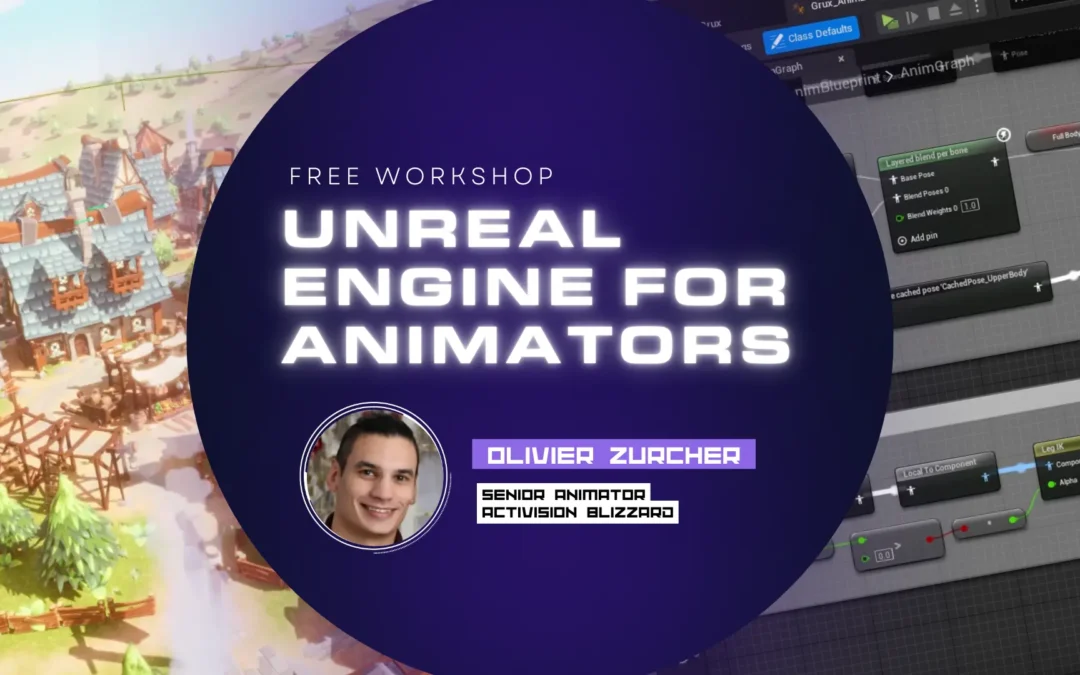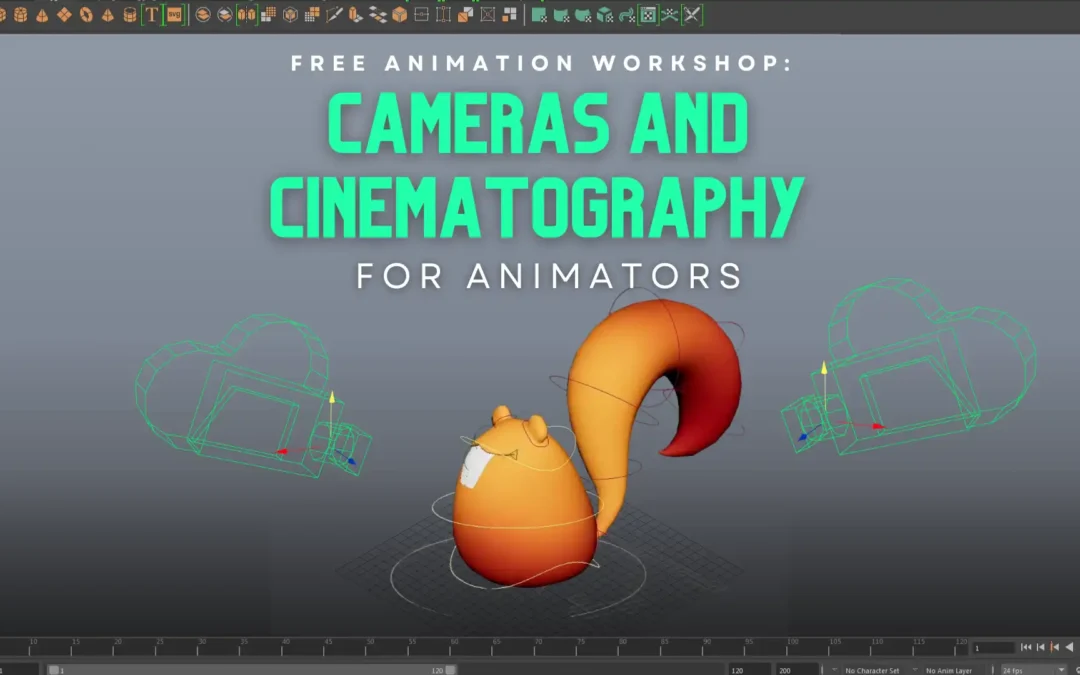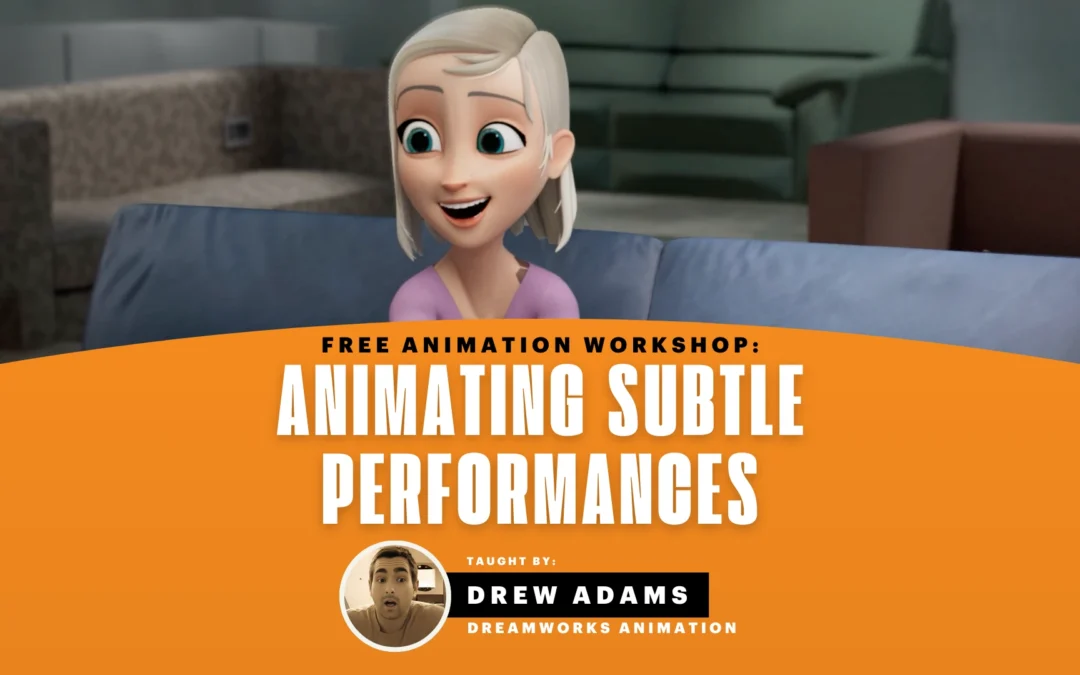
We’re continuing our in-depth look at the 2017 Animation Mentor Student Showcase! Meet the animators, find out where they’re working, and learn more about what it takes for students to create showcase-ready animation. This month, we take a closer look at the four incredible creature animation shots featured this year by Hiran Solanki, Kristian Carstensen, and Szilárd Hadobás.
Sometimes we sound like a broken record when we talk about the importance of solid creature animation skills, which is why we’re so glad when we’re proven right! The four creatures shots in this year’s student showcase were truly exceptional.
Creature animation shouldn’t be thought of as a separate category of animation, but instead an important tool that every animator should have access to. Whether it’s capturing the essence and weight of an existing animal or inventing believable behavior in fantasy creatures, animators that tackle these shots have sparked our imaginations in a powerful way. This is definitely true of these shots by Hiran Solanki, Kristian Carstensen, and Szilárd Hadobás. Enjoy!
Hiren Solanki
London, United Kingdom
There’s such solid weight and timing in Hiren’s shot. It’s a good study and application of a gorilla reference to a fantasy creature. The weight implied in this shot really helps to ground the character into the environment, which helps sell the believability.
Animation Mentor: Tell us about your process for creating a showcase-worthy shot!
Hiren: I am very happy that my Ogre shot was deemed showcase-worthy and ultimately made it onto the reel. This shot was created for the second assignment of the Creature Animation: Locomotion workshop, so I believe we had around four weeks to work on it. Coming off a standard cat walk for Assignment 1, we were asked to animate a more advanced creature locomotion for Assignment 2, such as a creature transitioning through different motion gaits e.g. from trot to run, from rest to walk etc.
The first week was spent just deciding what we wanted to animate, gathering reference material, thumbnailing, and essentially just understanding the animation as much as possible before actually starting to animate. In the second week we began to block out the animation, and the following week was spent on refining this simple blockout. The final fourth week was spent on polishing and finishing touches—of course feedback from our mentor, Alvise Alvati, during our weekly e-critiques and Q&A sessions informed our progression and action points throughout the assignment.
I generally stuck to the workflow that was set out by the course itself, and this process worked well for me as I was able to catch and address any fundamental issues at an early stage.
When blocking the animation, I was finding it challenging to work out the foot and hand placements of the ogre character. I was using gorillas and apes as reference for my animation, however even after collecting a wide array of reference, it wasn’t clear that apes tend to move with a diagonally oriented spine (from a top down view), so that their hips are offset from their shoulders, enabling their feet to move in-between and outside their hand placements. Alvise directed me toward a great piece of reference that demonstrated this more clearly during a Q&A session. Learning this early on allowed for things to fall into place more correctly and saved me a lot of headache.
My inspiration came largely from a shot animated by Animation Mentor Alumni, Haokun Liang. Haokun had animated a very impressive shot using the same ogre rig moving through a similar rocky desert terrain. He had done such a great job, I aimed to get similar results.
Polishing the animation with the time I had was very important to me, and since I was working full-time already, I had to fit Animation Mentor around my job, which meant working long hours mostly on weekends. But, as we all know, animation does take time, dedication, and care, especially if you want to end up with a showreel shot, or as in this case a “showcase-worthy” shot.
AM: What made you want to become an animator?
Hiren: It may sound cliché, but I always loved to draw from a young age, in particular characters and images which told a story. As such, I naturally gravitated toward creating my own characters, comics, character-based card games, magazines, etc.
Before my teenage years, my passion for drawing and creating comics was fueled by my discovery of Japanese anime on TV in the late 90s; I began to develop my art style more while searching for whatever “How To Draw”, and particularly “How To Draw Manga”, resources that I could: whether it be through books, the web, friends and seeking out feedback from established artists and fellow aspiring artists. Through my love for drawing, comics and anime, I thought to myself (somewhat naively) that the next natural step would be animation. Thus my focus began to shift from comics and more towards animating and ultimately I went to University to study animation.
AM: What will you remember most about your time studying with Animation Mentor?
Hiren: The thing I will maybe remember the most from my time studying at Animation Mentor is my mentor, Alvise Avati. The e-critiques and and detailed Q&A sessions we had with him really helped to push our work that extra mile. He was always more than happy to help and spend extra time going through things with us: not just limited to assignment work but also answering any questions about industry, show-reels, applying for jobs, etc. I appreciate all the help and insight he gave us.
AM: Where are you working? Tell us a little about your job and your day-to-day!
Hiren: I am working as a Senior Animator at a London-based games studio called Mediatonic. My day-to-day does tend to pivot a bit depending on the project and project needs, but my current focus is on character animation—creating movesets for game characters ready to be hooked up in engine.
Fundamentally, character animation remains at the core of my role, but since we tend to work in small teams, my day-to-day could also include other tasks ranging from rigging, creating particle FX, UI animations, editing footage, mentoring other animators, etc.
Of course as artists we are always looking to improve and develop our skills (my primary reason for taking the AM course), so receiving and giving feedback is also an integral part of an animator’s job, thus we have frequent reviews with our Art Director and critique sessions amongst the animation team in the studio.
AM: Last but not least, what’s your favorite animated movie?
Hiren: It is difficult to pick only one movie, but if I had to, it would probably be Yoshiaki Kawajiri’s Ninja Scroll. Although I think my overall favourite animation will always be the classic Dragon Ball Z. Both of these, amongst many, many other titles, have greatly inspired and influenced me as an artist, and essentially it is because of animations such as these that I am an animator today.
Kristian Carstensen
Histon, United Kingdom
This shot is working really well! Great mechanics and solid weight help the believability. It’s also really nice to see the emotional change as Dozer realizes there’s an incoming threat. That, along with the clear posing, elevates the storytelling of this shot and really makes it stand out. The contrast between all three characters is fantastic, between their different weights, timing and posing, and emotional states.
AM: Tell us about your process for creating a showcase-worthy shot!
Kristian: For the shot that ended up on the showcase reel I wanted to challenge myself by having multiple characters interact, and I wanted my main character to be making a decision and acting upon it. That was my initial brief to myself.
I always enjoy when animated characters touch and interact convincingly, so I wanted to see if I could pull that off and so I looked at references of apes and bears—which are generally quite gentle and caring creatures—and found several examples of them carrying their young around. Then I added a dragon for drama, and there’s the story.
I really love creating stages for my action, and so I used AM’s desert environment and a bit of custom modelling to create a scene of a pipe with water flowing out of it, as I needed Dozer to run and hide from the dragon. Our mentor, Nicole Herr, asked us to do something we’d never attempted to do within Maya for this shot, so I decided to attempt to create a decent water shader for the outflow. Ideally I would have liked to have had some water splashing around Dozer as she runs, but unfortunately I ran out of time.
The hardest part for me, as ever it seems, was fitting all the beats of action within the allotted frame range we were given without rushing things. My initial thumbnail planning always has more going on than I can reasonably fit within a given shot. So I usually have to cut out half the ideas and that about does it.
I created this little making-of video of my process with the shot as well.
AM: What made you want to become an animator?
Kristian: I pretty much always wanted to be an animator—I think, even before I knew what an animator was. I was completely fanatic about Disney’s classic films as a kid and always wanted to somehow be involved with creating those characters and films that I loved. I always read all I could about the making of films and the world of animation still continuously blow my mind with what is being created around the world, and I’m thrilled to be a part of it.
AM: What will you remember most about your time studying with Animation Mentor?
Kristian: We just had a baby girl a few weeks prior to doing the Creatures Workshop, so the thing I remember most clearly from my AM time was trying to manage my time between baby stuff and getting animation done. It turns out you most definitely cannot animate with a baby at your desk. I tried strapping her to my chest, but alas, it’s impossible 🙂
AM: Where are you working? Tell us a little about your job and your day-to-day!
Kristian: Right now I’m working at Cinesite VFX in London on Avengers: Infinity War where I’m surrounded daily by really great animators that are all super friendly and helpful. My days are spent animating and addressing notes, mostly addressing notes actually… It really stretches your animation skills having to change things, cut out ideas, insert new ones, and still stay within the deadline.
AM: Last but not least, what’s your favorite animated movie?
Kristian: My favourite animated movie…that’s a two hour conversation. But if pressed on it I’d have to cheat and split it up into two categories. VFX type films and Feature Animation. So, it’ll be Peter Jackson’s King Kong and Pixar’s The Incredibles.
Szilárd Hadobás
Andornaktalya, Hungary
There’s a great sense of interaction between the live action footage and the animated character in this shot. It really feels like there’s a back and forth reaction between them. Also we can see how the weight of the dragon is really being conveyed as lighter, and that’s through careful attention to the timing and spacing.
Another great example of interaction with animated elements. It really feels like the cat is tugging on that weapon! The weight and impact conveyed in this shot work so well too and makes both the ogre and cat feel grounded in the scene. A great example of interaction, storytelling, weight, and mechanics all working in concert.
AM: Tell us about your process for creating a showcase-worthy shot!
Szilárd: My shots were the dragon lighter and the ogre-cat live action shots. The dragon one was the first, and I just wanted to use one of the plates provided by AM because I was a big advocate of focusing on the animation instead of other tech stuff. But then the next week I felt that a general flyby animation would be flat and lack originality, so I decided to do something different.
The idea itself came into my mind in a split-second like a flash. I immediately started to look for references, and a few hours later I shot the plate using a camera and motion capture system. In a few days I had a solid blocking. I could work fast because that was something I loved to do. If you want to know more about the process here’s the making-of video.
I was struggling a lot on the plot of the ogre shot because the dragon was so original and successful that I wanted to show something even more innovative. I was considering a shot of some creatures riding each other for about a week, but I thought that was not exciting enough. So, I talked to my buddy who works at zLense developing a revolutional affordable markerless camera rig so we could arrange a shooting. Since they had rails laid on the set, we decided to create a shot with a larger camera move, like a chase scene.
My main inspiration was the Avatar‘s Thanator chase sequence, but I wanted to add live-action and CG interaction and a twist to the end. The technical difficulties were enormous—like converting the AM rigs to be able to use in the Unity game engine, bringing back the recorded camera data from Fusion, and messing with the recorded depth info as the live-action plate—but I really loved being a pioneer with all of the challenges. Overall I can say that time was my greatest enemy in this shot, but finally I could finish the animation before the deadline despite the shooting happened at the end of the third week.
In this shot the lighting, rendering, cat texturing, groom, and compositing were done by my friends. I am responsible for the idea, animation, and direction.
AM: What made you want to become an animator?
Szilárd: I climbed the usual ladder of CG, starting with modeling and texturing in high school in 1997 with the good old Imagine 2 making shiny glasses and cups and other objects just for fun. Lightwave was the first program where I could animate rigid bodies like starships planets and other mainly celestial objects. 3ds Max opened new horizons with skinning and bones in 2001. I still did modeling for years in games and learned scripting, which lead me to my first feature job. In the pre-production all tools was done so I started to animate to keep my job, and it turned out that I am not totally talentless in this field. I learned a lot of animation on that show and that planted in me the deep love toward this form of art.
AM: What will you remember most about your time studying with Animation Mentor?
Szilárd: The Q&A’s were by far the best times of AM. Listening to an industry pro talking about his/her work and our shots, and I could feel the passion. It was extremely inspiring and fun as well.
AM: Where are you working? Tell us a little about your job and your day-to-day!
Szilárd: I’m working at MPC London, at the moment, on a new Disney live-action feature. AM knowledge is perfectly usable, and what I learned here made me confident from the very beginning of the contract. The work itself is not super easy, but live-action and CG contact always was challenging. Something what I expected spiced by some fun with the technology.
AM: Last but not least, what’s your favorite animated movie?
Szilárd: My favourite one is Anomalisa. They could bring the characters close to the audience despite the unique realisation. For me that is the best example how someone can bring a character to life.
Want more? Here are some other posts we think you might like:
Animating Musical Shots: A Student Showcase Behind-the-Scenes
Is Your Demo Reel Ready for a Major Studio?
Top 3 Reasons You Want Creature Animation on Your Demo Reel

Learn how to animate epic creatures with our Creature Animation Workshops! Work with professional Industrial Light & Magic and Digital Domain animators who’ve worked on Guardians of the Galaxy, Star Wars: The Force Awakens, and more!



